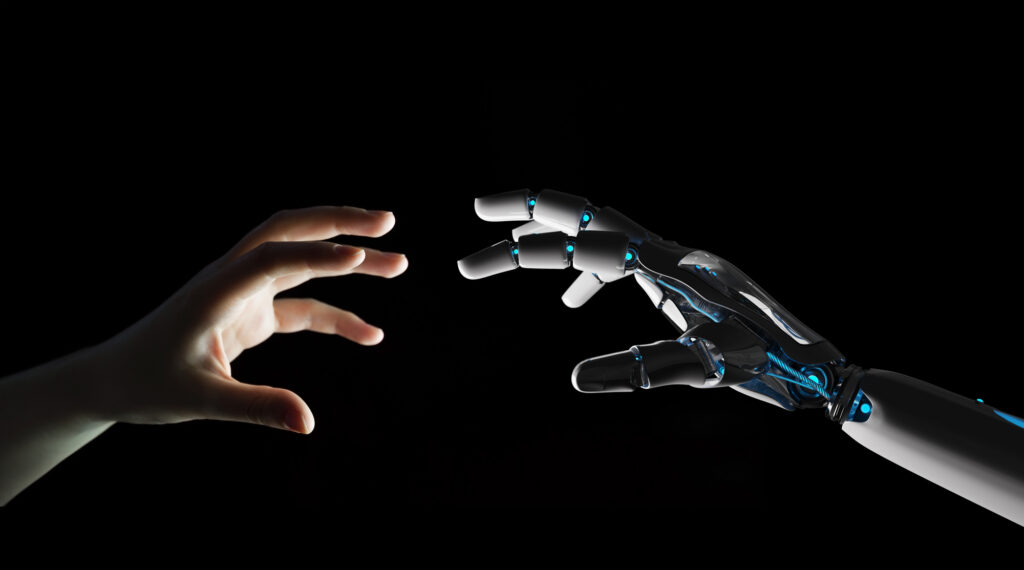The convergence of cutting-edge technologies and manufacturing practices has given rise to a new era of production: smart manufacturing. At the heart of this transformation lies the concept of human-machine collaboration, where humans and machines work hand in hand to optimize productivity, efficiency, and innovation on the factory floor. This article delves into the dynamic landscape of human-machine collaboration in smart manufacturing, exploring its benefits, challenges, and the profound impact it has on shaping the future of industrial production.
The Rise of Smart Manufacturing
Smart manufacturing represents a paradigm shift in traditional production processes. It leverages technologies such as the Internet of Things (IoT), artificial intelligence (AI), robotics, and data analytics to create interconnected and intelligent systems that streamline operations and enable data-driven decision-making.
Defining Human-Machine Collaboration
Human-machine collaboration refers to the symbiotic relationship between human workers and advanced technologies in a manufacturing setting. It recognizes that both humans and machines have unique strengths that, when combined, result in superior outcomes.
Benefits of Human-Machine Collaboration
- Enhanced Efficiency: Machines excel at repetitive tasks, leading to increased production speed and precision. Humans, on the other hand, bring adaptability, problem-solving, and creativity to the process.
- Quality Assurance: Collaborative systems can detect and correct defects in real time, ensuring that products meet high-quality standards.
- Innovation: Human-machine collaboration fosters innovation by encouraging cross-disciplinary thinking and the development of novel solutions.
- Worker Safety: Machines can handle dangerous or physically demanding tasks, reducing the risk of injury for human workers.
- Data-Driven Insights: Smart manufacturing systems generate vast amounts of data. Humans analyze this data to uncover trends, identify inefficiencies, and make informed decisions.
Challenges and Considerations
- Skill Gap: As technologies advance, the workforce needs to acquire new skills to effectively collaborate with machines. Training and upskilling are essential.
- Change Management: Transitioning to a collaborative environment requires a shift in organizational culture and mindset. Proper change management strategies are crucial.
- Ethical and Social Implications: Addressing ethical concerns related to job displacement and data privacy is vital.
Real-World Applications of Human-Machine Collaboration
- Cobotics: Collaborative robots, or cobots, work alongside human operators, assisting with tasks such as assembly, packaging, and quality control.
- Predictive Maintenance: Smart systems monitor equipment in real time, alerting operators to potential issues before they lead to breakdowns.
- Digital Twins: Digital replicas of physical assets enable real-time monitoring, analysis, and optimization, leading to efficient resource allocation.
- Process Optimization: Analytics and AI-driven insights help humans optimize processes by identifying bottlenecks and recommending improvements.
Fostering Human-Machine Collaboration
- Training and Education: Provide comprehensive training to workers to build skills in working alongside advanced technologies.
- Clear Communication: Establish open channels of communication between human workers and machines to ensure seamless collaboration.
- Data Literacy: Equip workers with the ability to interpret and leverage data generated by smart manufacturing systems.
Human-machine collaboration in smart manufacturing represents a harmonious fusion of human creativity, problem-solving abilities, and adaptability with the precision, speed, and data-driven capabilities of machines. This synergy has the potential to drive innovation, improve efficiency, and transform the manufacturing landscape. As organizations continue to embrace smart manufacturing practices, fostering a culture of collaboration between humans and machines will be instrumental in redefining industrial production and ensuring a future of sustainable growth and advancement.
The Perfect Planner Team is here if you have any questions about Smart Manufacturing, and we offer a free consultation service. If you would like to connect with us on this article or any other topic, please message us on LinkedIn, shoot us an email at info@perfectplanner.io, visit our website at www.perfectplanner.io, or give us a call at 423.458.2979.
Author: Thomas Beil
Publication Date: June 6, 2024
© Copyright 2024 Perfect Planner LLC. All rights reserved.






